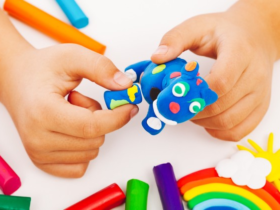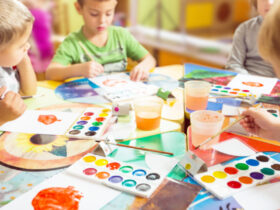Making Children’s Chores More Fun
Children are inherently disorganized, and their proclivity for causing a lot of disorder may rapidly lead to a disorganized and chaotic atmosphere. However, encouraging youngsters to help around the house is critical in instilling a feeling of responsibility and ownership in them. Many youngsters express dissatisfaction with their tasks and dislike cleaning. As a result, your home may look cluttered and disorderly. However, there are ways to enhance their enjoyment of the scenario.
Identify Age-Related Chores
Examine your children’s behavior to see if it is acceptable for their age. Because you can’t see them doing it, a three-year-old isn’t incapable of cleaning up toys or doing laundry. They should be involved so that they acquire a feeling of responsibility when they grow older. The following are examples of age-appropriate chores:
3-5 years old
-
- Collection of toys
- Surface dusting
6 to 8 years old
- Collection of garbage
- Vacuuming
- Cleaning the flooring
9–12 years old
- Car washing
- Grass cutting
- Easy meal preparation (making salads, sandwiches, etc.)
13 and up
- Making use of the washing machine and dryer
- Bathroom cleaning
- Work in the garden (mowing, raking leaves, etc.)
If you have a large number of children of comparable ages, having them alternate between jobs over time may be beneficial. This may provide youngsters with a feeling of variety in their daily routine and help them avoid boredom. For example, one youngster may be in charge of making breakfast while another is in charge of setting the table. The elder child can straighten up after breakfast while the smaller youngster does the washing. If you change their tasks in this way, your children will acquire new skills while remaining engaged and motivated.
Create a List
Keeping track of your children’s development might make their duties more fun. As they cross items off the list, this may keep them motivated and give them a sense of success. It may be gratifying for them to see their successes at the end of the day or week.
Anyone who has attempted to keep a running list of domestic duties knows how difficult it can be. Paper pieces are frequently misplaced, making it difficult to recall which activities have been accomplished and which still need to be completed. A whiteboard is an excellent tool for keeping track of to-do lists. When it’s time to allocate duties this way, you may save paper scraps and wipe the board clean each week.
You don’t have to be concerned about someone erasing incorrect information or lying about what was completed on Sable Flow’s hidden whiteboard. As the name says, this adaptive tool is a hidden whiteboard. A poster frame that may be personalized with artwork or images protects the whiteboards.
This keeps people from diverting from their chore list while also maintaining the elegance of your home. You won’t have to worry about your tiniest toddlers drawing on the board because it’s attached to the wall!
Make It a Competition!
Children like turning mundane tasks into mini-contests. Why should completing chores vary from other times? Set a timer to see how quickly your children can finish a duty they generally despise, such as making the bed. So that the kids may keep track of their progress as they finish the assignment on the whiteboard. If you have a large group of children, you might even hold a competition to see who can pick up the most toys.
Here are some additional game ideas:
- The classic “Simon Says” game is an efficient technique to impart new duties to youngsters. To play, have one person assume the role of Simon and issue directions for various tasks that must be completed. “Simon says we need to dust the living room,” for example. For completing chores, children can receive points or prizes.
- Another enjoyable option is to organize a chore scavenger hunt. Please make a list of home duties and assign them to family members. Then it’s time to see who can accomplish their responsibilities the fastest. The winner will get a prize!
A Points-Based Reward System
Children’s obligations, as previously stated, may result in prizes and points. They have the potential to be powerful motivators. You may write the point system down on your whiteboard list. The point system can also be used to create other types of rewards.
Each youngster receives points daily based on age and the difficulty of the tasks allocated to them. A five-year-old gets five points for making their bed, while an eight-year-old gets eight points for taking out the trash. The child with the most points at the conclusion of the week receives a prize. This may be a special treat, more screen time, or anything else that appeals to you.
You might also utilize a gift box with folded pieces of paper inside that hold various wins that work similarly to coupons. What your youngster receives may surprise them. This week, maybe some ice cream or a new toy. We might see a movie next week. They may be able to work more rapidly since they have so many possibilities.
Doing Chores Together Allows You to Spend Time Together
You might not know it, but assisting your children with chores can deepen your relationship with them. Chore time, in fact, may deepen your relationship with your children. Working on home duties like washing, cooking, and cleaning may help children acquire crucial life skills while also boosting their self-esteem.
They would appreciate it if you took the time to acknowledge their achievements. Spending time with your children might also result in wonderful memories. Working on projects with your children also deepens their ties. When people hear music while doing chores, it reminds them of their time together when it plays somewhere else.
Even though it is difficult, you may encourage your children to carry out their obligations if you make them enjoyable. Finding a strategy that works for your family may take several tries, but the effort will be worthwhile in the end. Keep a good and consistent attitude in all you do. You’ll quickly discover that motivating your children to assist around the house is simple if you have a little patience and creativity. Before you begin, get a concealed whiteboard from www.sableflow.com to help you make your initial list.








